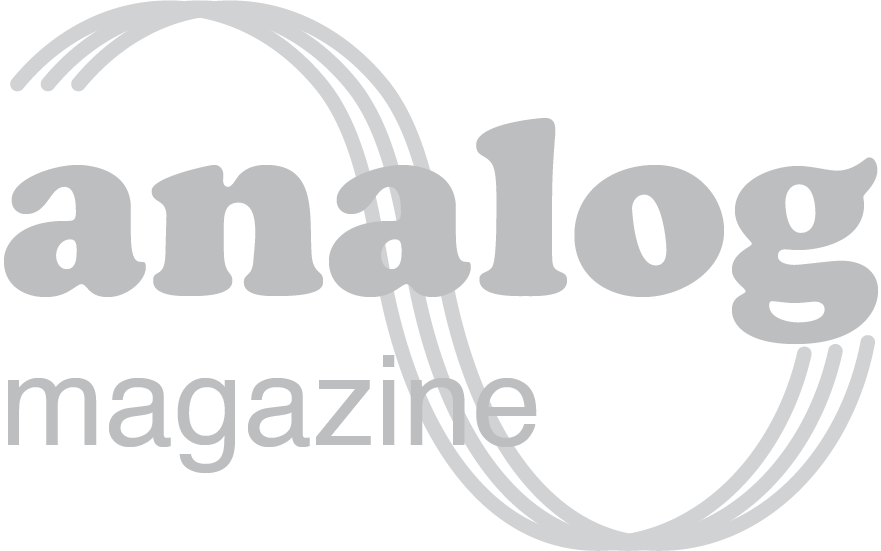
Paula McCartney
A Field Guide to Snow and Ice
Mar 05, 2018
Paula is a talented photographer and artist from the US who focuses her work on photography, photobooks and ceramics. In her photography, Paula explores the concepts of constructed landscapes as well as repetitions in natural and artificial environments. ‘A Field Guide to Snow and Ice’ cleverly associates winterly images with other icy forms in order to show us a private interpretation of winter, initiating in this way conversations about personal experiences, truth in photography and recurrent forms throughout nature.
First of all thank you very much for your contribution to our project. Can you please introduce yourself for us?
Hi, I’m Paula McCartney. Thank you for inviting me to share my work. I’m from the United States -I grew up in Kansas City, moved to New York City when I was 18, then to San Francisco for grad school when I was 28. I’m now living in Minneapolis where I teach photography at an art college and have a studio practice in photography, photobooks and ceramics. I also have an 8-year-old son who gets a lot of my attention.
How did you start in photography?
I began studying advertising in college, but after a year realized it wasn’t for me. I took my first photography course at that time, really enjoyed it and switched to photography. After that, I did a full time program at the International Center of Photography (which is both a school and museum) and that is where I fell in love with the medium. All my instructors were exhibiting artists and writers in NYC and it was there that I realized I wanted to be an artist. After ICP, I was an assistant to a fine art photographer and worked in a photography gallery. I count those two jobs as an equally important part of my education. Later, I decided to go to graduate school so that I could focus full time on my work for two years and be able to teach at the college level.
What inspires your work?
It is different for each project. While living in NYC, I visited the bird aviaries at the Bronx Zoo. I was fascinated by these environments that are part natural (the birds, foliage) and part man made (painted backgrounds, sculpted boulders), landscapes that weren’t static but changed and evolved like a landscape in the outside world. I continued to make many photographic series and books (“Bird Watching”, “Flock”, “Book of Trees”) that explored this idea of a constructed landscape. Responding to the landscape, but also taking control over parts that I wanted to be different, really appealed to me. I’m inspired by both the natural world and the altered version of it I picture in my imagination. I am also attracted to the repetition of form that can be found in both natural and built environments. This idea is at the heart of ‘A Field Guide to Snow and Ice’ as well as the project I am currently working on that explores how light and shadow can be used to activate and highlight connections in architecture and on geometric ceramic sculpture. Many of the forms in this new work dialog directly with forms from ‘A Field Guide to Snow and Ice.’ I tend to focus on one theme over several series.
What is ‘A Field Guide to Snow and Ice’ about?
‘A Field Guide to Snow and Ice’ is my interpretation of the idea of winter. After moving from San Francisco to Minneapolis I decided to brave the elements and explore the snowy landscape, however, at times without being out in the cold. The series includes images of snowfalls and pressed wildflowers, frozen waterfalls and stalagmites, snowdrifts and piles of gypsum sand, as well as other icy forms in order to consider and reinterpret natural structures and the way they can reference multiple ideas on both micro and macro levels. Elements are abstracted from the vast landscape to illustrate the winter of my imagination. The ambiguity of scale and substance helps the subjects transcend their source. With less there becomes more.
I saw winter everywhere, in every environment, in every season and categorized it by pattern, shape, and line rather than merely by substance. I was fascinated by the way a frozen waterfall dialogues with the dripped accumulation of calcite from the water that formed a stalagmite over millions of years. Scattered calcium sulfite deposits on a lava bed in Hawaii speak to a snowfall at night – both yearn to be the cosmos. I found the Alps in the snowplowed piles of sand along the side of the road at White Sands National Monument, my own Arctic ice floes in the ice that broke free from the harbor and floated out into Lake Superior.
The experience of winter is central to people living in the North; we often talk about the weather. This work invites viewers to look at the winter that surrounds them in a new way, abstracted from the vast landscape -the winter of my imagination. Combining images of true snow and ice with forms reminiscent of these substances initiates conversations regarding personal experiences, truth in photography, and recurrent forms throughout nature.
How would you describe your visual language?
I use photography as a tool to illustrate the ideas in my head. Rather than documenting the world as it exists, I either add to a natural landscape or extract my subjects from their wider environment in order to examine and interpret the details that interest me. I often photograph a subject against a black background or with a flash at night to isolate it and allow it to exist on its own, unburdened from context.
Who are your favourite photographers / artists?
I love the nature inspired sculptures of Roxy Paine, Tara Donovan, and Giuseppe Penone; Lygia Clark’s geometric hinged metal sculptures, Brancusi’s sculptures and the interpretative photographs he made of them and Edmund de Waal’s ceramic sculpture installations. I’m excited by both the photographs and books that Letha Wilson and Bryan Graf make.
What are your main interests as an artist?
To share my personal and at times peculiar interpretation of the world. To draw connections and highlight the subtle yet sublime moments that can be found (or created) in the world.
What is your favourite movie?
One of my favorite movies that relates to this series is ‘Force Majeure’ directed by Ruben Östlund in that it is both beautiful and unsettling.
What is your favourite photo book?
I can’t single it down to one, so here are a few: ‘Dalston Anatomy’ by Lorenzo Vitturi, ‘Swamp’ by Chloe Sells, ‘Expired Paper’ by Alison Rossiter and the current one I’m swooning over is ‘The Erratics’ by Darren Harvey-Regan.
Thank you very much for your time and contribution to analog magazine.
All images © Paula McCartney



















